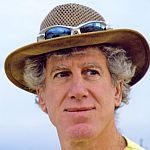 (HOST) The current debate about obesity reminds commentator Ted Levin of one of the most compelling and cautionary tales of excess in the natural world — it’s the story of the now extinct passenger pigeon.
(HOST) The current debate about obesity reminds commentator Ted Levin of one of the most compelling and cautionary tales of excess in the natural world — it’s the story of the now extinct passenger pigeon.
(LEVIN) Aldo Leopold called the passenger pigeon a "biological storm," that played between "two biotic poles of intolerable intensity: the fat of the land and his own zest for living." The pigeons, wrote Leopold, "roared up, down and across the continent sucking up the laden fruits of forest and prairie, burning them in a traveling blast of life." Pigeons were thickest in forests west of the Allegany Mountains. In 1806, Alexander Wilson, the father of American ornithology, estimated one Kentucky flock to be over two and a quarter billion. In 1813, Audubon watched a procession pass undiminished for three days.
The sound of flying pigeons has been compared to that of a tornado; the cooing of roosting pigeons to Niagara Falls. Flocks blotted out the sun.
Rookeries were measured in square miles. One in Wisconsin covered 850. A hundred nests in a tree were not uncommon. Limbs two-feet thick broke under the weight of roosting pigeons. Trees toppled. The ground beneath a nest colony was white and slick, inches deep in guano.
Hungry pigeons devoured beechnuts, acorns, chestnuts, hazelnuts, dogwood berries, cherries, strawberries, mulberries, maple keys, elm seeds, and grasshoppers – then vomited, and gorged again. They destroyed farm fields so often that in 1703, the Bishop of Quebec officially excommunicated them. Pigeons were such gluttons, they sometimes fell off their perches and burst apart when they hit the ground.
When passenger pigeons flew, however, they were angelic. Blue and gray and brick red . . . iridescent. Flocks hurtled through space at sixty miles per hour, shape changing like enormous mosaics whenever a Cooper’s hawk sliced through, forming, reforming, pattern after pattern.
In 1850, Zadoc Thompson, author of the History of Vermont, reported large nesting colonies in the beech woods west of the Connecticut River. A century earlier, the entire village of Piermont, New Hampshire, fed on wild squab for a month.
The demise of the passenger pigeon was swift and, sadly, complete. Destruction of the eastern woodland and unregulated marketing hunting brought the pigeon to its end in less than a century. New York City markets paid Vermont farmers six to twelve dollars a barrel for salted pigeons, and from the Midwest they arrived by train-car loads.
On May 18, 1907, while vacationing at a cabin in Virginia, Theodore Roosevelt spotted a dozen wild pigeons – perhaps the last – wheeling above some nearby pines. Roosevelt failed to find them the following day. Seven years later, on September 1, 1914, the last passenger pigeon, a bird named Martha, died in the Cincinnati Zoo. She was either 17 or 29 years old depending on whose account you read.
Some historians think that prior to 1492, Indians kept pigeons in check, by regularly burning woodlands and prairies. When the Indians vanished, an ecological lid was removed from the eastern deciduous woodland and the passenger pigeon population literally took off – only to vanish like so much dandelion fluff in the wind.